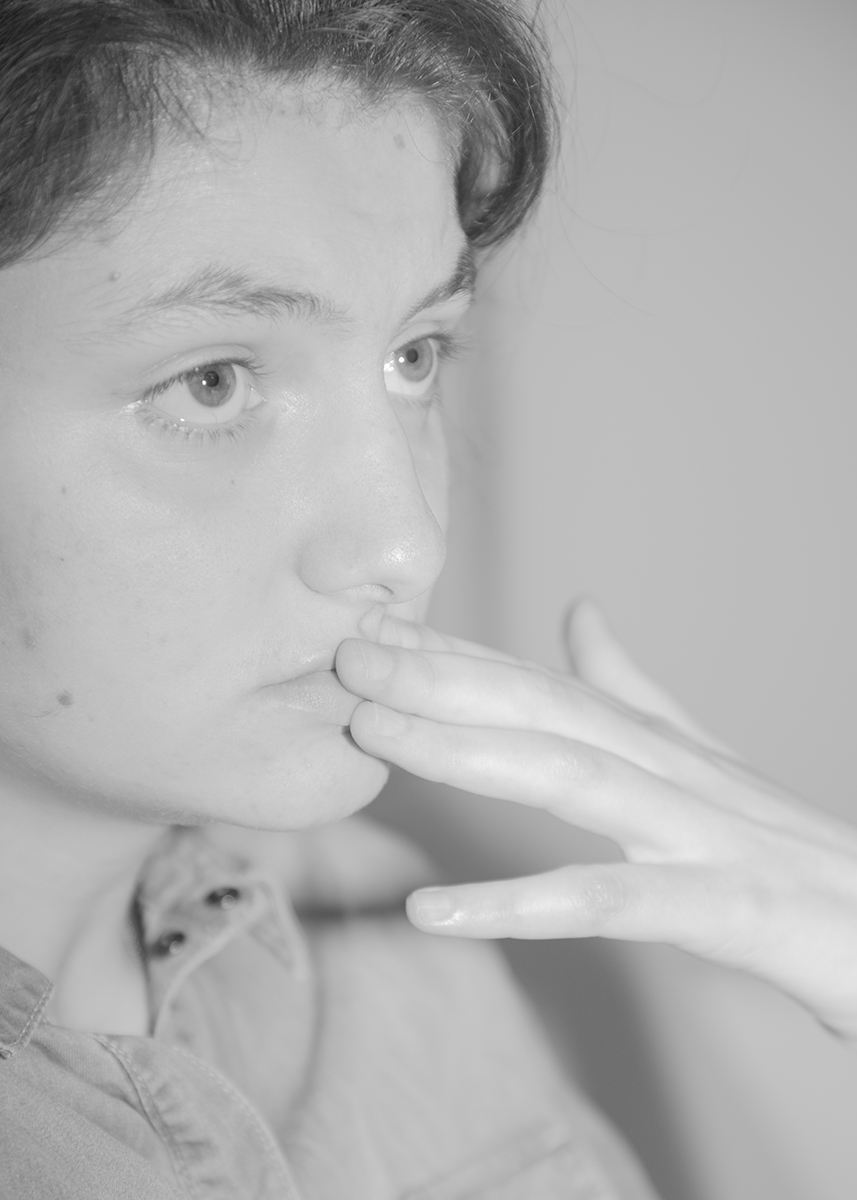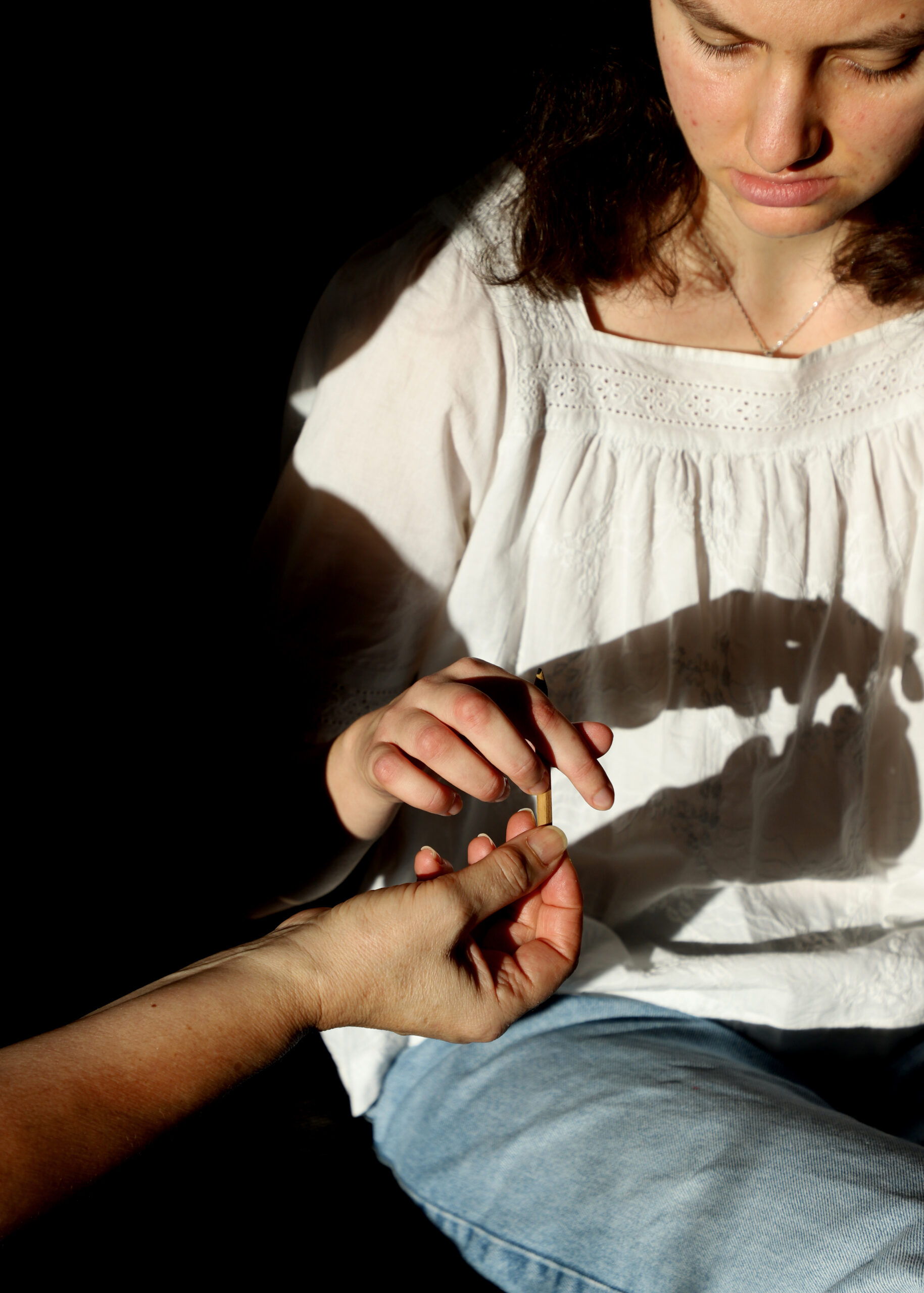

Holding a pencil, holding a camera
Two people are looking at each other. Two people communicate through sight. One of them is holding a pencil and the other one is holding a camera. The one holding the pencil looks at the pencil, at the other person, at the camera and the space around them. The one holding the camera looks at the other person, directly and through the viewfinder. Visual communication is formed between them, by looking at each other for a while, whilst focusing at the same time on their objects as a point that they are going back to again and again.
“Blyertspenna” is the process of building intimacy with my cousin, Kristina, through photography. Kristina is type 3 autistic and nonverbal. Working with her has highlighted to me how an interaction can be based on the act of looking and on the act of showing as forms of communication. Kristina and I have both created this dynamic between us based on these acts, changing our positions in the process.
There is a difference between what I am seeing and what is shown to me by Kristina. I place my focus on what Kristina shows me to be most important to her ; her pencil. She has a special attachment to this object. Having lost its conventional context, this object works as a personal item for her. The repetition of the pencil in my images is a reflection of the persistent use of it by Kristina. John Berger in his book “Ways of Seeing” writes about looking as an act of choice and explains that we always visually perceive objects based on the relation we have to them. Also the act of touching situates ourselves in relation to the object we are touching. Kristina touches the pencil, I touch the camera. When I look at Kristina, I see her relationship to the pencil. When Kristina looks at me, she often sees me with my camera. We both have a personal item and a relation to it. I often perceive her in this context, holding the pencil. Maybe she also associates me with the camera.
A photographer is easily associated with the act of looking, but since Kristina also communicates visually and physically, this becomes a different form of language between us – looking at each other and looking at images. I show her my images, she sees my images, I see her reaction to them / she shows me her reaction to them. The act of looking itself becomes an interactive activity. The process of looking at images becomes more important than the actual images. It is a shared experience.
Two people are sitting on a couch. One of them is looking at images, the other one is looking at the other person’s gaze and at the images. They are both observing. The first one perceives her environment mostly through her eyes, the other one sometimes perceives her environment through her camera. The camera itself, as an object, transforms into a way of looking between them. When the first one does not prefer to look directly at the other one, the other one places the camera in front of her face. The first one looks at the camera. The other one looks at the first one through the viewfinder. They are looking at each other.


References
Berger, John, Ways of Seeing, British Broadcasting Corporation and Penguin Books,
1972, p. 8-9